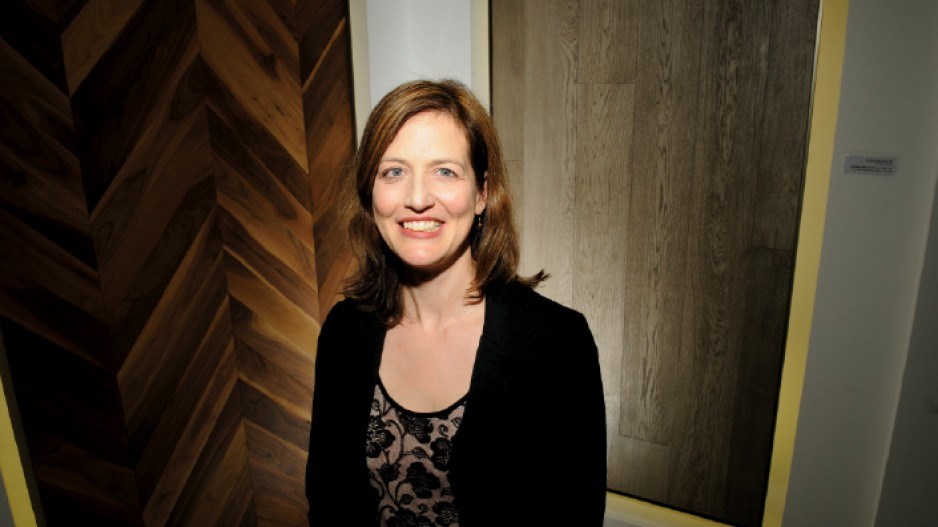We may be living in an era of increasing globalization, but the Architecture Foundation of British Columbia (AFBC) would like to encourage you to build local – at least when it comes to environmentally responsible housing.
As a way of fostering innovation and fresh approaches to the issue of sustainability within the building industry, the AFBC created a contest to design the “100-mile house.”
Billed as an “open ideas” competition, the contest challenged participants to design a 1,200-square-foot dream home using only materials manufactured or recycled within a 100-mile radius from Vancouver’s geographic centre.
Submissions were judged by a panel of five residential design and urban planning experts.
Architect Tony Osborn of Vancouver carried off the competition’s grand prize of $5,000 for his Myco House, a design that featured masonry blocks made of mycelium (the vegetative part of a common oyster mushroom), along with lime-hemp plaster and wood harvested from forests devastated by the mountain pine beetle infestation.
While Osborn admits his proposal for “mushroom bricks” sounds far-fetched, he notes the technology is currently under development by the 3M Company in the U.S.
“It’s not Star Trek-type stuff,” he said. “It just needs to be implemented correctly in the building industry.”
Osborn admits his design was intended to inspire his peers as much as the general public.
“Architects like to get together and sort of feel bad about having contributed to [the] environmental problem we find ourselves in,” Osborn said. “I wanted to offer an alternative message. These problems are solvable. We just need to be creative about it.”
According to Dorothy Barkley, executive director of the AFBC, the purpose of the competition was to attract solutions or approaches from “an extremely diverse group of people.”
As Barkley explains, submissions were accepted not only from architects, designers, builders, and related professions, but also from students, homeowners, or anyone with an idea of how to build a better house.
“We’re hoping that out of that [diversity], we’ll get some really fundamental and important new approaches to the construction of homes.”
Rob Sieniuc, principal of Broadway Architects, believes the competition could be an intriguing way to find new solutions to old problems.
“I think it’s a great idea. I think it’s long overdue,” Sieniuc said. “There are all kinds of ideas that can come from [a competition]. Some of them might be crazy ideas, but you never know. Something [might] come along that’s a different take on the way we do things.”
Beyond the new ideas, Sieniuc hopes the 100-mile house will shine a light on the importance of single-family residential housing when it comes to solving specific environmental challenges. As Sieniuc explains, it’s an issue that is often overshadowed by high-profile government developments and larger multi-family projects.
“We can talk about all the big projects, and how they’ve been third-party verified and all these kinds of things,” Sieniuc said. “But it’s really at the individual level – which is the house – that the greatest change is going to happen.”
Tracy Casavant, executive director of Light House Sustainable Building Centre, a not-for-profit agency that provides consulting services to governments and developers on sustainable building practices, believes the competition will pay dividends to the province’s burgeoning green-building industry.
“Even though Vancouver is a bit of a hub for green building, we’re not necessarily a hub for green building products and technologies,” Casavant said.
“[The competition] will definitely focus our attention on what we’re already doing really well in Metro Vancouver with respect to green building products and technologies, and where the gaps are.”
As Casavant explains, those “gaps” may provide municipal governments with the impetus to attract more green manufacturers to the region and nurture the local sustainable building industry, rather than simply relying on imports from other jurisdictions.
“We’re starting to realize as we push our energy performance more and more, there’s a real link between what we can do [about sustainability] and our ability to access product and technologies without constantly importing them from Austria and Germany.”
Barkley acknowledges that increasing the profile of the local sustainable building industry – not only manufacturers, but designers and developers too – was an important goal.
“That wasn’t [our] primary purpose,” Barkley acknowledged. “But we realized that this would be a very welcome outcome of the competition. We wanted everyone to realize that a builder/designer does not have to go outside their local region for the necessary materials, services, labour to complete a great house.”
For the construction companies and manufacturers who specialize in sustainable building, the competition has a more tangible benefit, boosting their stature and providing a positive profile for their industry.
“It can mean increased business, profits and achievement of a higher public profile for the individual firms,” said Barkley, “while reinforcing the view of B.C. and Vancouver as a mecca for environmentally responsible design and construction methods and ideas.”




